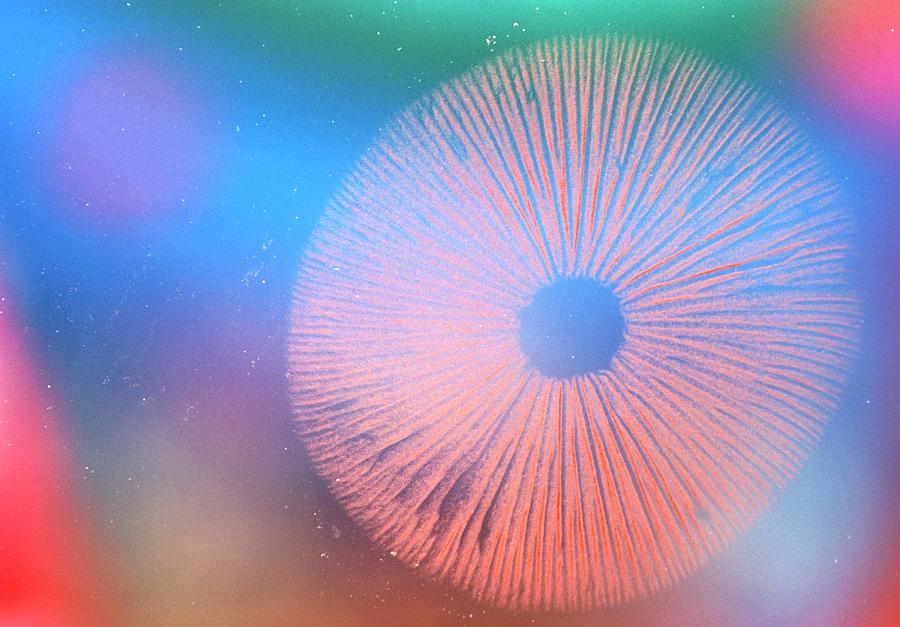

I have watched mycology students cram all kinds of mushrooms into the little compartments in their trays, then close up the trays and carry them around with the mushrooms sweating in the closed container and banging around with no padding at all. I'm sorry to be a curmudgeon, but this is one example of the new idea being really inferior to the old idea.

A whole generation of mycology students is learning this method. Over the past 5–10 years, mycologists have taken to using plastic tackle boxes (or the sectioned trays from tackle boxes) to hold mushroom collections in the woods. If you want bags for larger collections, I recommend the larger waxed-paper bags that are sold as disposable containers for sanitary napkins these are also readily available online. Mushrooms tend to sweat, especially in hot weather, and you are likely to have a wet mess on your hands if you put them in plastic bags. If you cannot get waxed paper bags, brown paper sandwich bags are the next-best option. Several companies make waxed paper sandwich bags these are the best mushroom holders, and they are easily purchased in stores and online. You will need the pocket knife in order to dig up the bases of some mushrooms (see Collection Methods, below), and the waxed paper bags are what you will use to store your mushrooms. By contrast, collecting mushrooms for identification requires a pocket knife, some waxed paper bags, a Sharpie, insect repellent, and a basket. I recently decided to take up fly fishing $400 later, I managed to catch a few six-inch brook trout. We mushroom hunters are fortunate that our hobby doesn't require lots of expensive equipment. The resulting spore pattern is a disc with no gill, pore or spine patterning, of course.Be sure to follow rules and regulations for mushroom picking!

(Hair lacquer is not as good, but it's a lot better than nothing.) Making spore prints from other kinds of fungiīoletoid fungi (those producing their spores within tubes) and Hydnoid fungi (those producing their spores on spines) can be treated in exactly the same way as gilled fungi, and their spore prints consist of patterns of dots or of rings respectively.Ĭup fungi - for example Peziza species - should be placed with the fertile (inner) surface downwards. Spray the completed spore print with artist's clear varnish. If you want to keep the spore print or to make several such prints for display purposes, you will want to ensure that the spore patterns will not be smudged during handling. Remove the tumbler and then carefully lift the cap. Here's a useful tip: some small mushrooms tend to dry out very quickly even when covered, but if you place a piece of wet tissue paper on top of the cap you will avoid this problem. Leave the tumbler in place for two or three hours. Place a tumbler on top of the cap to prevent it from drying out. If you intend looking at the spores under a microscope, then whatever colour the spores are making the spore print on a microscope slide or (better still) a slide cover slip is ideal. This works okay for mushrooms whose spores are not white! For white-spored mushrooms use black paper or clear plastic or glass. Place the cap, gills downwards, on white paper. Some stems snap easily from the cap, but in most instances it is best to cut the stem using a scalpel or a very sharp knife.

Remove the stem so that when you turn the cap over the gills will make close contact with the paper. The particular colour of the spore print can help you narrow down the number of possibilities in your quest to identify the specimen to species level. For example in the family Russulaceae some genera have whitish spores while others have yellow spores, ochre spores etc. In some families there is a range of spore colours. The colour of the spores, when seen en masse, is one of the best ways of determining which mycological family the specimen belongs to - for example the Amanitaeae (which have whitish spores), Cortinariaceae (which have rust-brown spores), Entolomataceae (which have pinkish spores) etc. One of the main reasons for making a spore print of a mushroom or any other kind of fungus is to help in the process of identification.


 0 kommentar(er)
0 kommentar(er)
